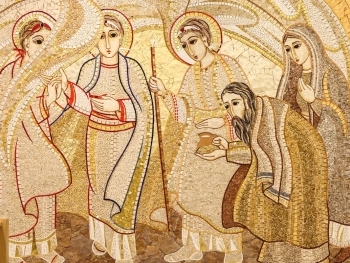The Grand Hotel Scarborough has earned a distinguished place in the travel and tourism category as one of the top ten places, buildings, and historical sites that narrate the remarkable story of England and its global impact. This accolade highlights the hotel's significant role in the tapestry of England’s historical narrative.
The Rise of Scarborough and the Birth of the Grand Hotel
Scarborough's rise to prominence began in the early 17th century with the discovery of natural mineral waters, believed to possess medicinal properties. This discovery spurred the construction of a spa house in the 1700s, transforming Scarborough into a renowned spa town. The influx of visitors seeking the therapeutic waters led to the town's rapid development, establishing it as one of the first seaside resorts in the UK.
Nestled in the heart of this thriving town, the Grand Hotel stands as an iconic landmark. When it opened on July 24, 1867, it was celebrated as "the largest and handsomest hotel in Europe." Its unique V-shaped design paid homage to Queen Victoria, with architectural features symbolizing the calendar year: four towers representing the seasons, twelve floors for the months, fifty-two chimneys for the weeks, and 365 bedrooms for the days. An additional luxury was the provision of taps offering both saltwater and freshwater for bathing, catering to the spa-seeking clientele. These distinctive characteristics, combined with high standards of service, quickly made the Grand Hotel a favorite among holidaymakers.
A Storied History Through Wars and Peace
During the early 20th century, the Grand Hotel was a hub of social activity, offering evening entertainment and attracting wealthy patrons. However, World War I brought significant challenges. The hotel suffered damage during the German naval bombardment of Scarborough on December 16, 1914, with around 30 artillery shells hitting the building. Despite this, the Grand Hotel persevered and continued to attract affluent guests, including the future King Edward VIII and Prime Minister Ramsay MacDonald.
World War II further entwined the Grand Hotel with military history. The hotel served as a base for RAF personnel, with anti-aircraft guns mounted on its turrets. The hotel’s resilience was tested again, but post-war efforts saw substantial renovations costing around £100,000, restoring the Grand to its former glory over two years.
In more recent times, the Grand Hotel played a role in national security during the Iranian Embassy siege in 1980, hosting covert training for SAS agents. This episode added another layer to its rich historical tapestry.
The Modern Era and Recent Developments
The mid-20th century saw a decline in the British seaside holiday tradition, impacting the Grand Hotel's fortunes. However, the purchase by Butlins in 1978 revitalized the hotel, maintaining a steady influx of guests and implementing renovations. In 2004, Britannia Hotels acquired the property, continuing its legacy.
Britannia Hotels invested £7 million in 2006 to refurbish the Grand Hotel, ensuring it remained a paragon of hospitality. This investment paid off, as in 2017, the Grade II listed hotel was recognized by Historic England as one of the top ten places, buildings, and historical sites that encapsulate England's storied past and its impact on the world.
The Grand Hotel Scarborough is more than just a place to stay; it is a monument to England’s historical and cultural journey. From its beginnings as a symbol of Victorian grandeur to its resilience through two World Wars and its modern-day status as a historical landmark, the Grand Hotel stands as a testament to the enduring legacy of Scarborough and England’s rich heritage.












